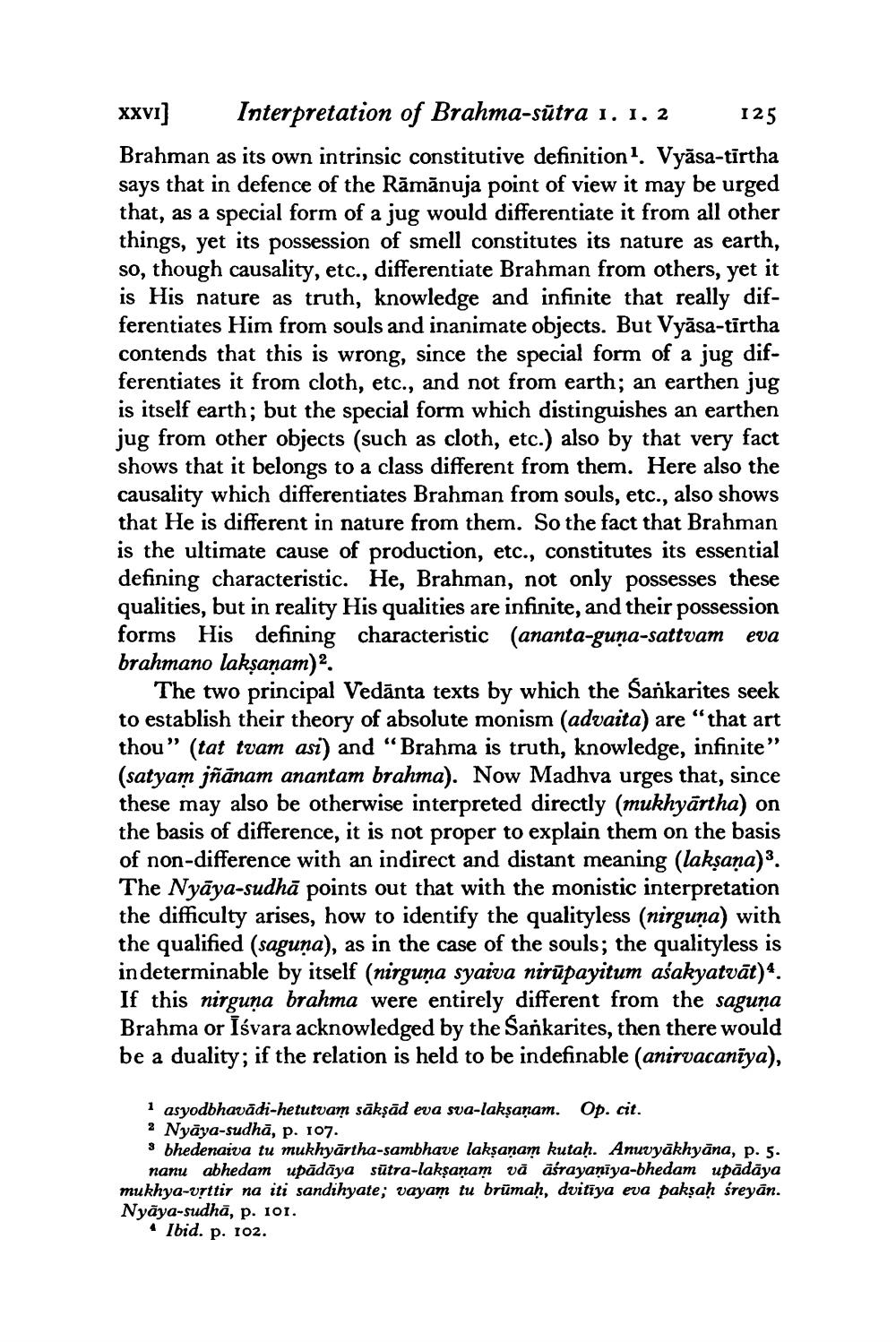________________
XXVI]
Interpretation of Brahma-sūtra 1. 1. 2
Brahman as its own intrinsic constitutive definition1. Vyasa-tirtha says that in defence of the Rāmānuja point of view it may be urged that, as a special form of a jug would differentiate it from all other things, yet its possession of smell constitutes its nature as earth, so, though causality, etc., differentiate Brahman from others, yet it is His nature as truth, knowledge and infinite that really differentiates Him from souls and inanimate objects. But Vyasa-tirtha contends that this is wrong, since the special form of a jug differentiates it from cloth, etc., and not from earth; an earthen jug is itself earth; but the special form which distinguishes an earthen jug from other objects (such as cloth, etc.) also by that very fact shows that it belongs to a class different from them. Here also the causality which differentiates Brahman from souls, etc., also shows that He is different in nature from them. So the fact that Brahman is the ultimate cause of production, etc., constitutes its essential defining characteristic. He, Brahman, not only possesses these qualities, but in reality His qualities are infinite, and their possession forms His defining characteristic (ananta-guṇa-sattvam eva brahmano lakṣaṇam)2.
125
The two principal Vedanta texts by which the Sankarites seek to establish their theory of absolute monism (advaita) are "that art thou" (tat tvam asi) and "Brahma is truth, knowledge, infinite" (satyam jñānam anantam brahma). Now Madhva urges that, since these may also be otherwise interpreted directly (mukhyārtha) on the basis of difference, it is not proper to explain them on the basis of non-difference with an indirect and distant meaning (lakṣaṇa)3. The Nyāya-sudha points out that with the monistic interpretation the difficulty arises, how to identify the qualityless (nirguna) with the qualified (saguna), as in the case of the souls; the qualityless is in determinable by itself (nirguna syaiva nirupayitum aśakyatvāt)*. If this nirguna brahma were entirely different from the saguna Brahma or Isvara acknowledged by the Sankarites, then there would be a duality; if the relation is held to be indefinable (anirvacaniya),
1 asyodbhavādi-hetutvam sākṣād eva sva-lakṣaṇam. Op. cit.
2 Nyāya-sudhā, p. 107.
3 bhedenaiva tu mukhyārtha-sambhave lakṣaṇam kutaḥ. Anuvyākhyāna, p. 5. nanu abhedam upādāya sūtra-lakṣaṇam vā āśrayaniya-bhedam upādāya mukhya-vṛttir na iti sandihyate; vayam tu brūmaḥ, dvitiya eva pakṣaḥ śreyān. Nyaya-sudha, p. 101.
▲ Ibid. p. 102.




